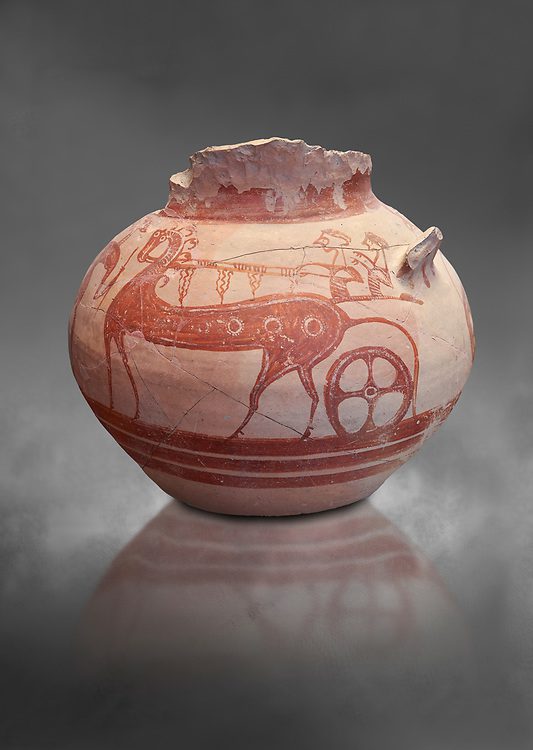Blog 02 – Mycenaean Chariots – 3/24/22
In Blog-01, I discussed the invention of the Stage I chariot in 1745 BCE. This chariot remained essentially unchanged in the Kingdom of Mitanni in Eastern Turkey until after the Hyksos conquest by Egypt in 1645 BCE. After that, it progressed in the Egyptian design version through at least Stages II and III. (I’ll discuss these in a future Blog.)
However, the Mycenaean chariot remained virtually unchanged until the fall of the Mycenaean Kingdom after the Trojan War around 1210-1190 BCE, with one exception. The Mycenaeans did not use the horse in warfare. The chariot was primarily used as a status symbol. As such, high status nobles rode one to the battlefield and then fought the battle on foot, with the ranks of infantry. (see H. W. Catling, “A Mycenaean Puzzle from Lefkandi in Euboea, American Journal of Archaeology (1968) (See also The Iliad, which preserved memories of the Trojan war, even though The Iliad only dates to the 700s BCE)
First, the Mycenaeans predominantly used a single horse to draw the chariot. That precluded using the dual-horse tongue as it would unbalance the load on one side of the horse. To resolve that, they bent the tongue up and over the flanks of the horse and mounted the tongue on a ball-joint on the shoulders just behind the horse’s mane. This worked, but it greatly weakened the strength of the tongue as a whole. The tongue would no longer be able to bear the strain of battlefield maneuverability without breaking. The horse could gallop straight ahead, but needed to turn slowly. (This explains Achilles dragging Hector’s body behind his chariot in The Iliad.)
Pictures of Mycenaean chariots are preserved on numerous vases (mainly kraters) of the period. Though not pictorially accurate, they portray the general chariot design. Actual chariots, including one from Troy, were preserved by the Minoans on Crete, through none remain in good condition. The best pictorial example I am aware of is a modern stamp from Cyprus.



